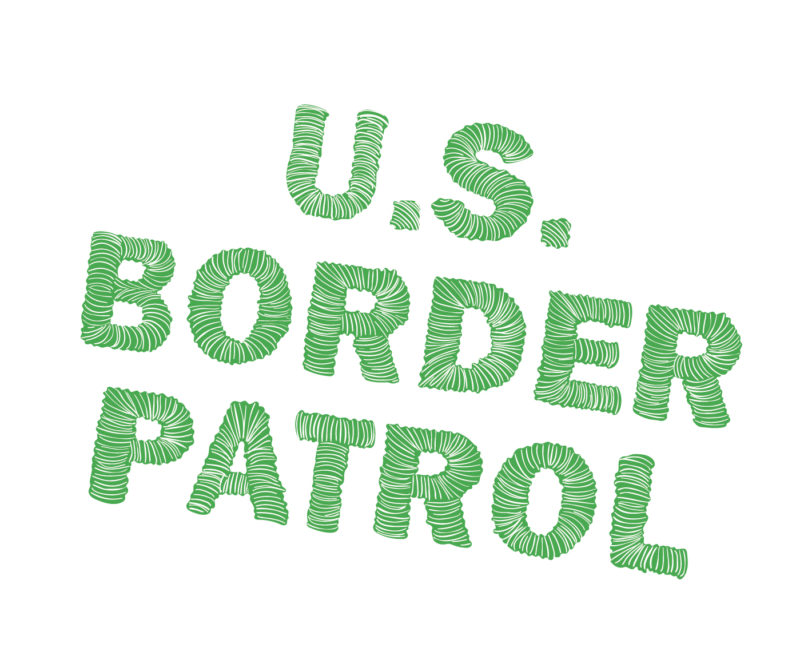I spot the T-shirt one sunny day at a thrift store in San Francisco, pluck it from the rack, and hold it up to examine it. It’s a green, discolored military shirt. It is so worn that someone’s upper body has been stained into the cotton—like the Shroud of Turin. I am haunted by the circular patch that has been industrially sewn onto the breast: US Border Patrol, it says. Each letter, along with the silhouette of the continental US, has been embroidered in brown. I walk straight to the register, T-shirt in hand. I pay $2.98.
For weeks I don’t know what to do with the shirt. My artist friends want me to wear it. They want me to submerge myself in what we both imagine lives in the shirt—militancy, the desire to protect the purity of a place, an officious fear of the unknown. My artist friends believe that a metamorphosis can take place, that what the shirt represents—a desire for a white, Christian country—can mutate into something else if flaunted by an immigrant. But I cannot bring myself even to touch the shirt, let alone put it over my head.
I keep the shirt hidden in my closet, nestled inside a transparent plastic bin on the top shelf. I’ve folded the shirt meticulously; it sits in the cloudy plastic day after day, unchanged. I begin to think of the shirt as a specimen. Soon my imagination goes into overdrive and I begin to imagine the torso that once wore the shirt. Before breakfast, I see in my mind’s eye the mole-dotted flesh of the expanded pectorals. I see the single vein pulsing in the wide neck, the wide, meaty shoulders.
I carry so much violence in me. During the sixteen years that I’ve been a US immigrant, I have been prodded, harassed, investigated, and cataloged by the government so many times that I know exactly how the collection of evidence should proceed. I put on blue dishwashing gloves. I bring down the plastic bin. I enjoy the feeling of tossing the husk left behind by a Border Patrol officer to and fro. The lid unlocks with a pleasant, clean pop. I take the shirt out and resist the impulse to wear a dust mask. Instead, I bring the shirt to my nose. It doesn’t smell like anything, not even soap.
I’ve set up a workstation at my dining...
You have reached your article limit
Sign up for a digital subscription and continue reading all new issues, plus our entire archives, for just $1.50/month.
Already a subscriber? Sign in





